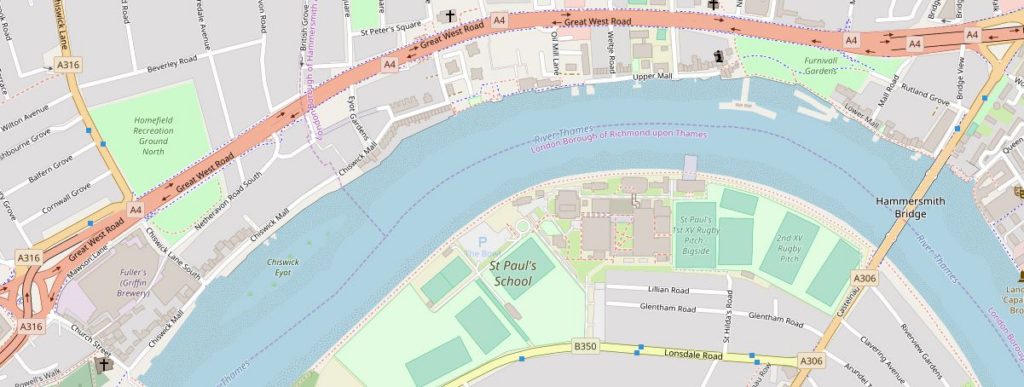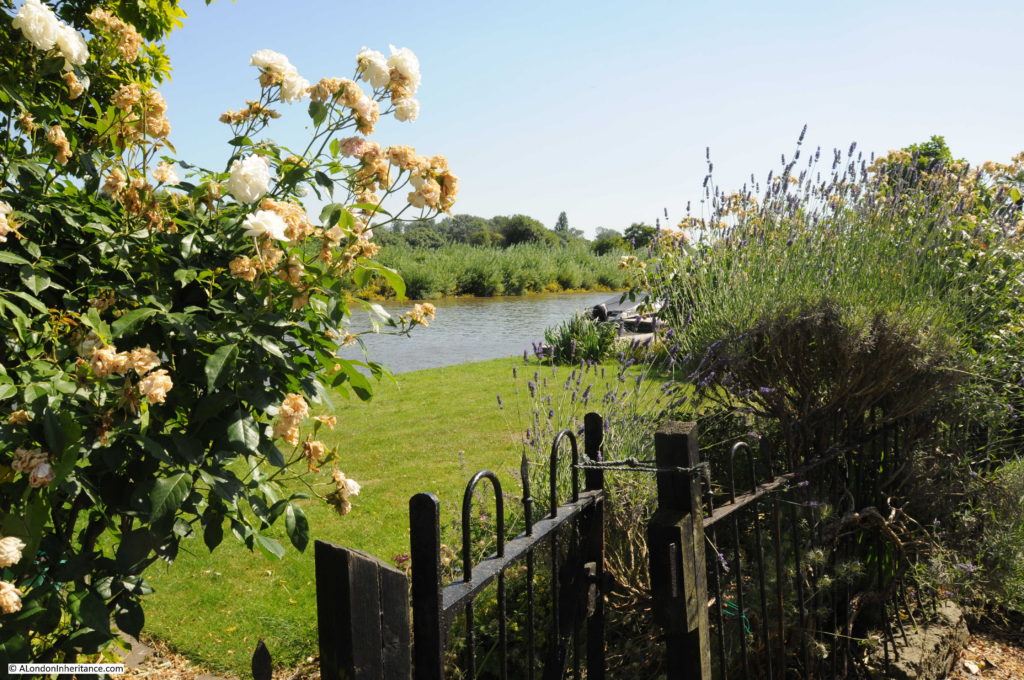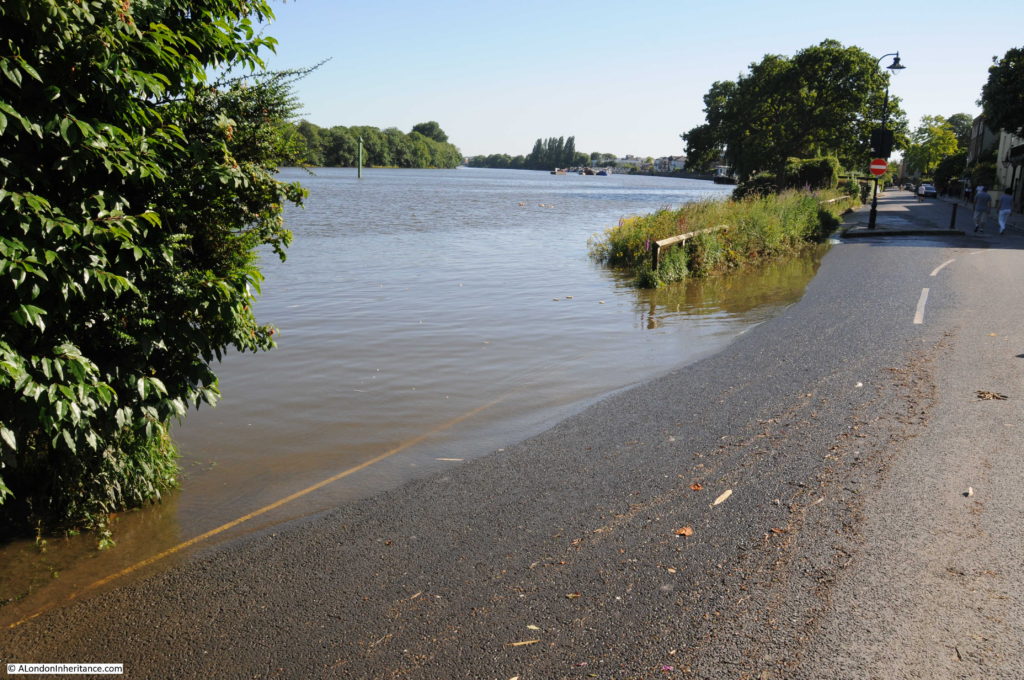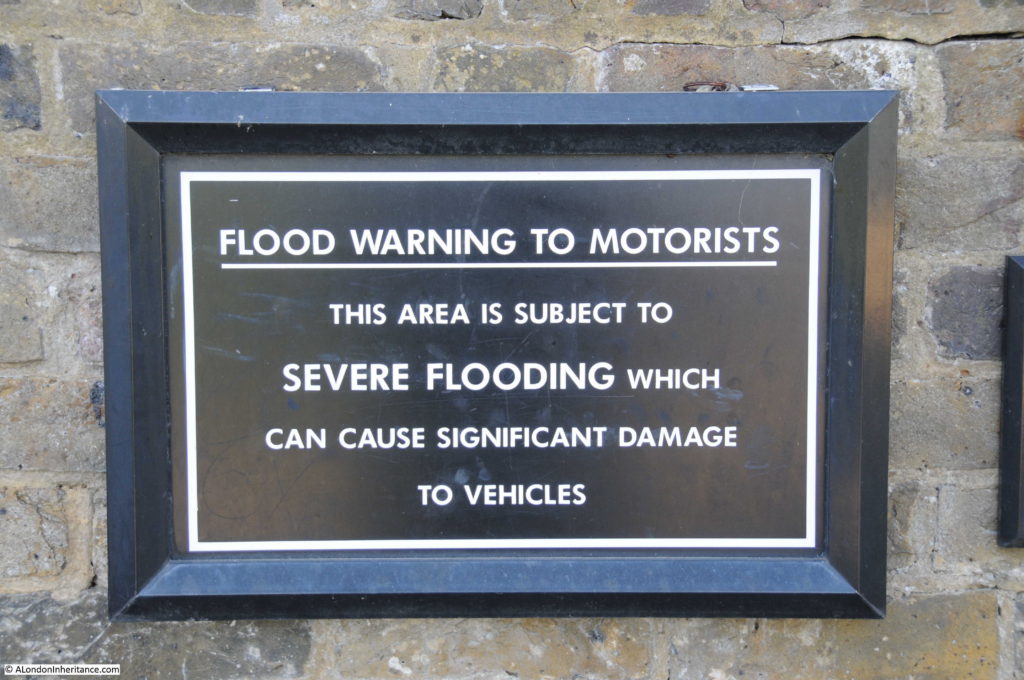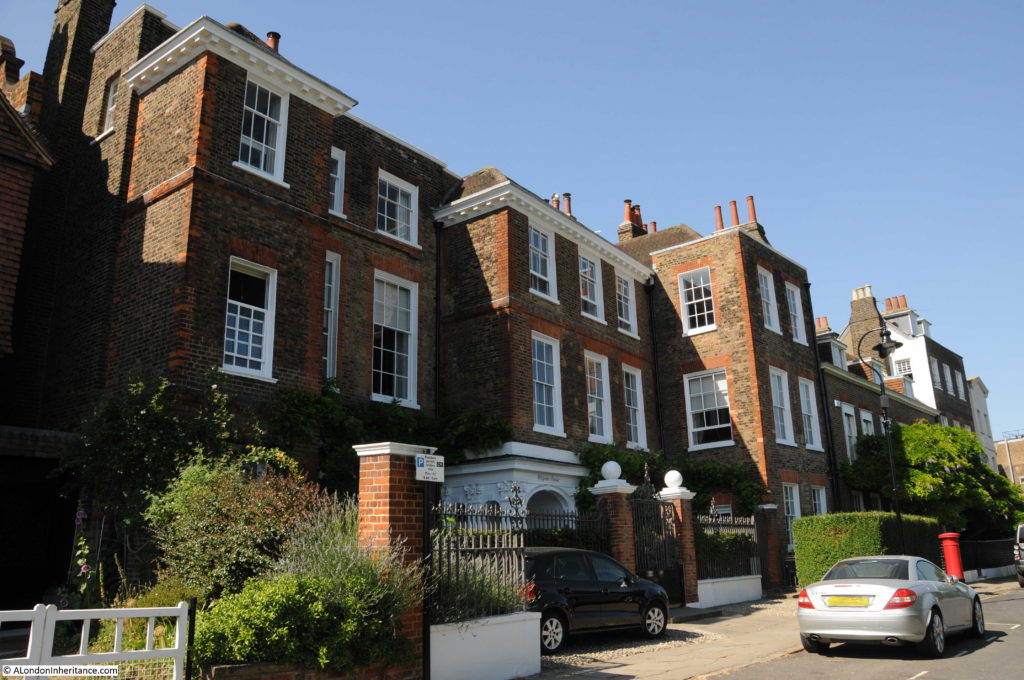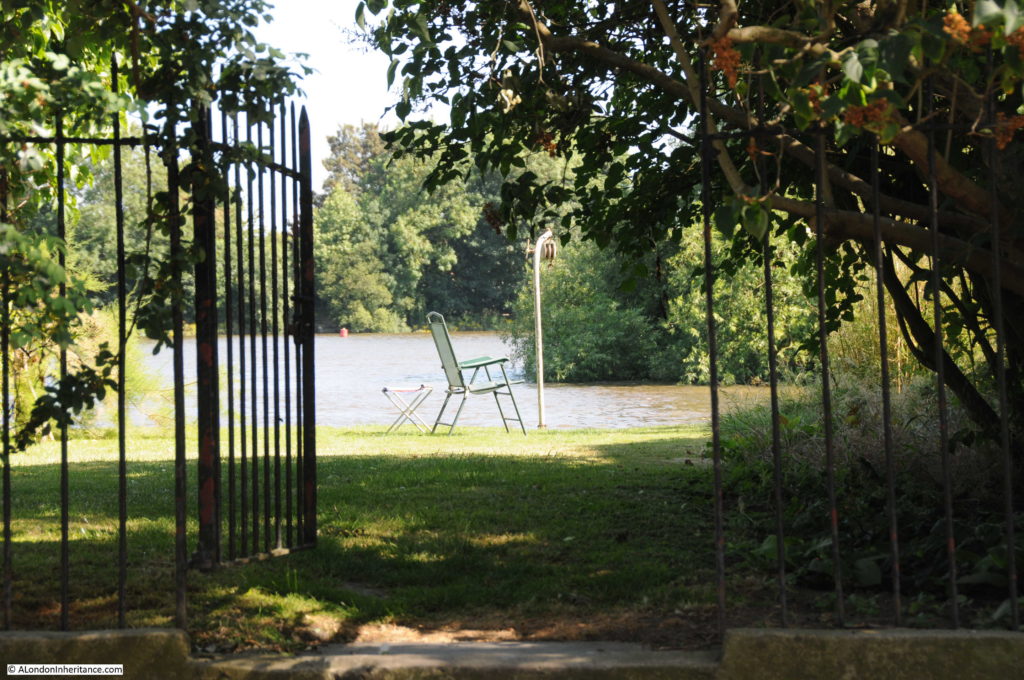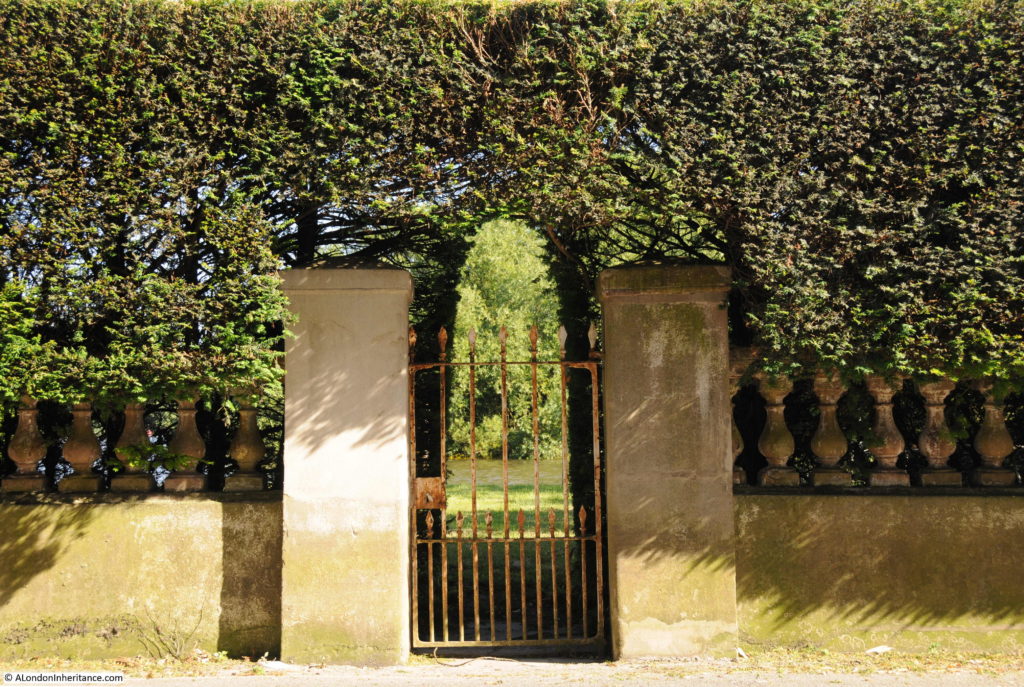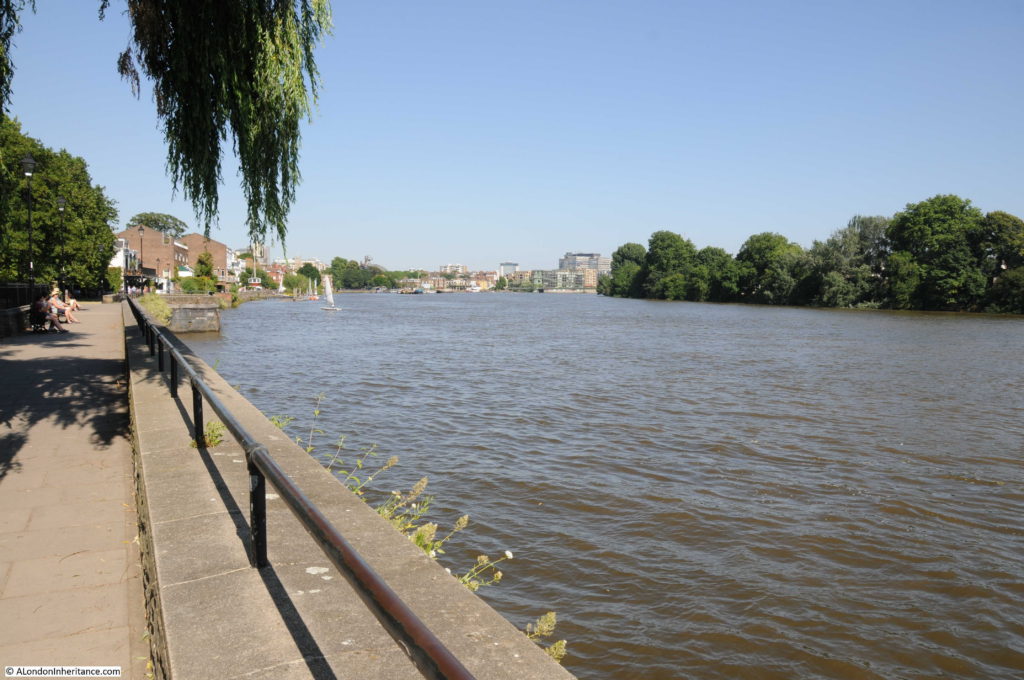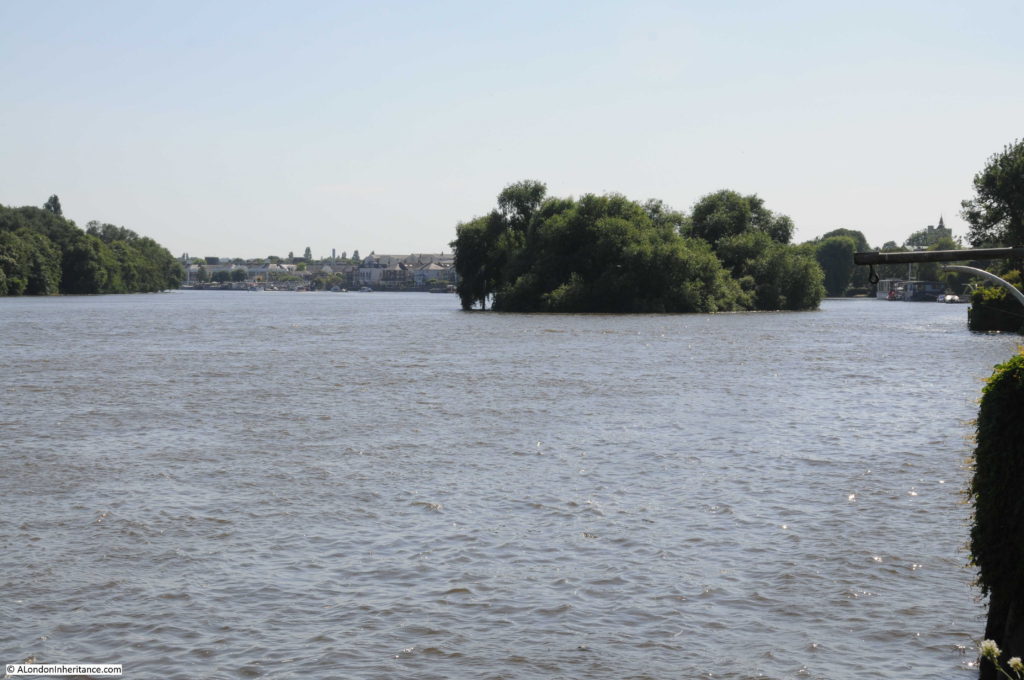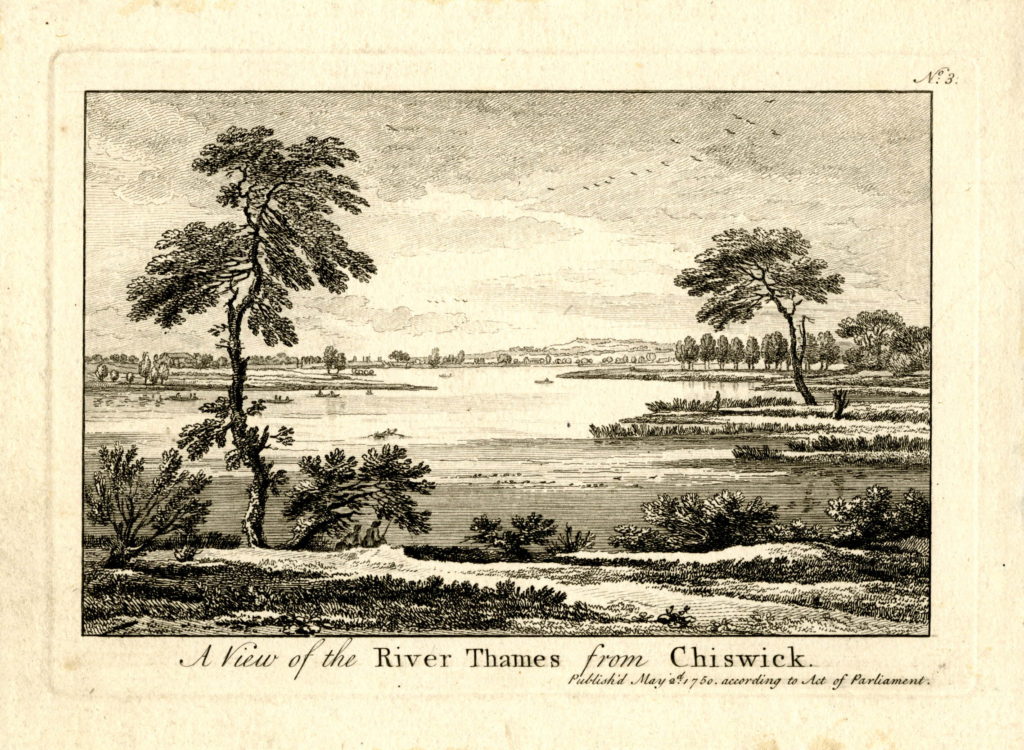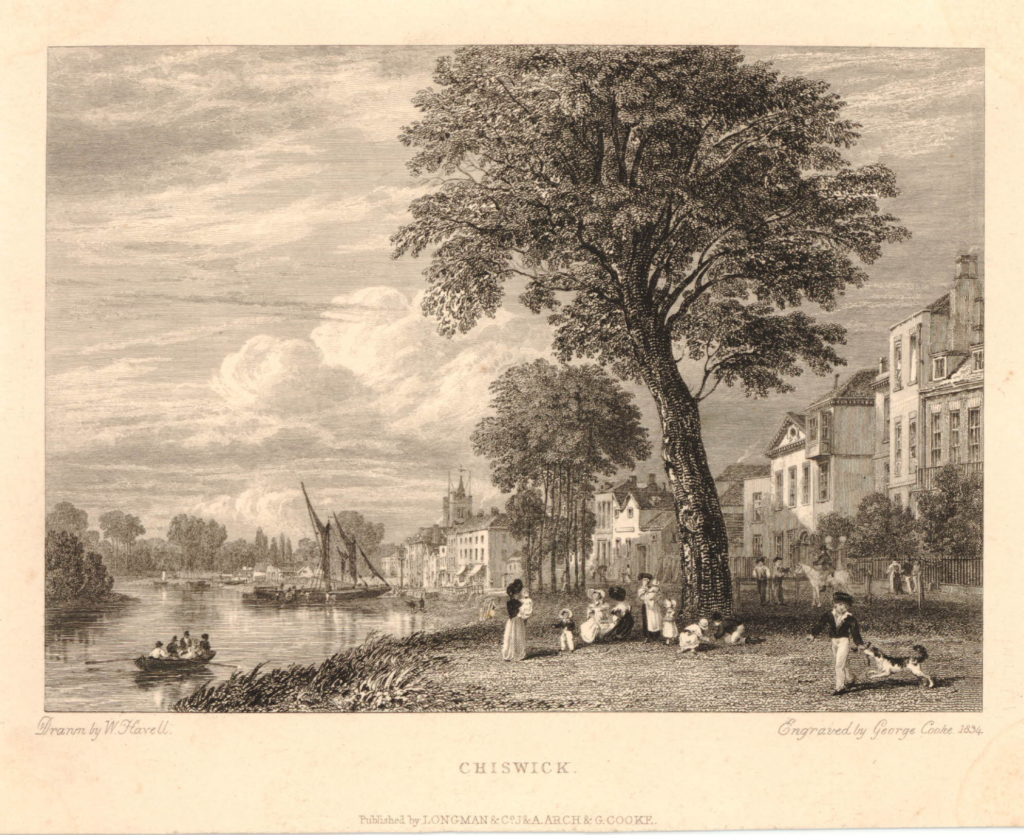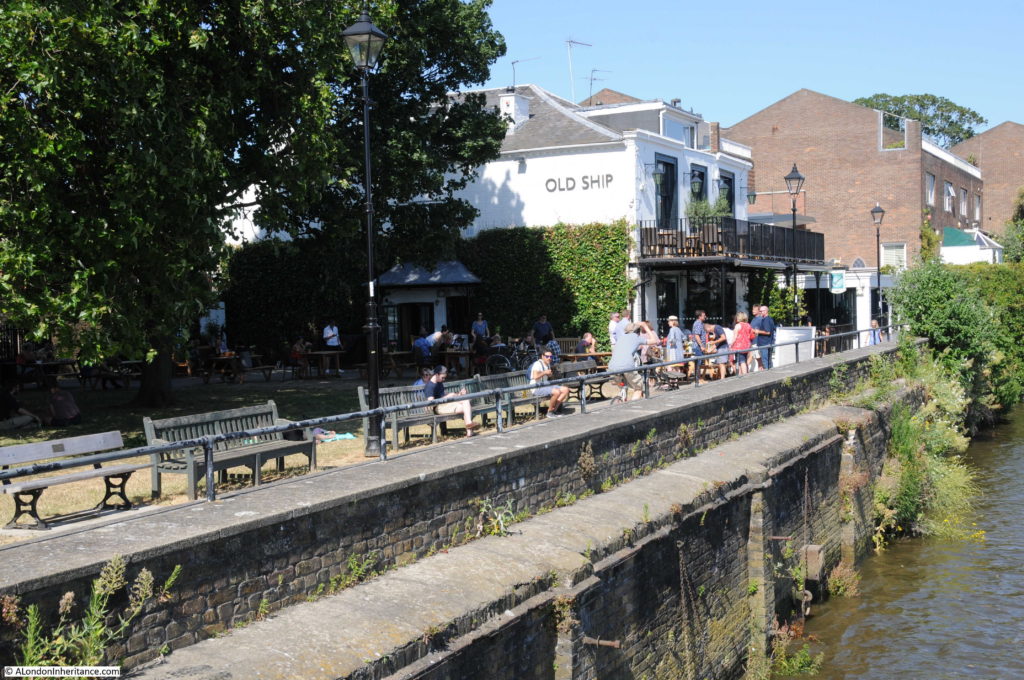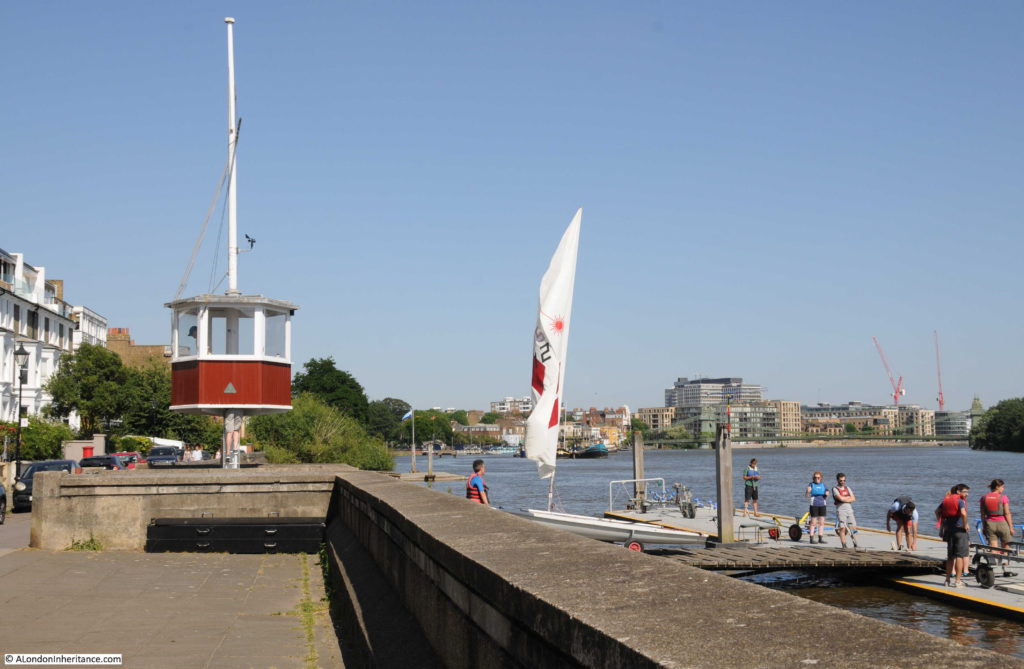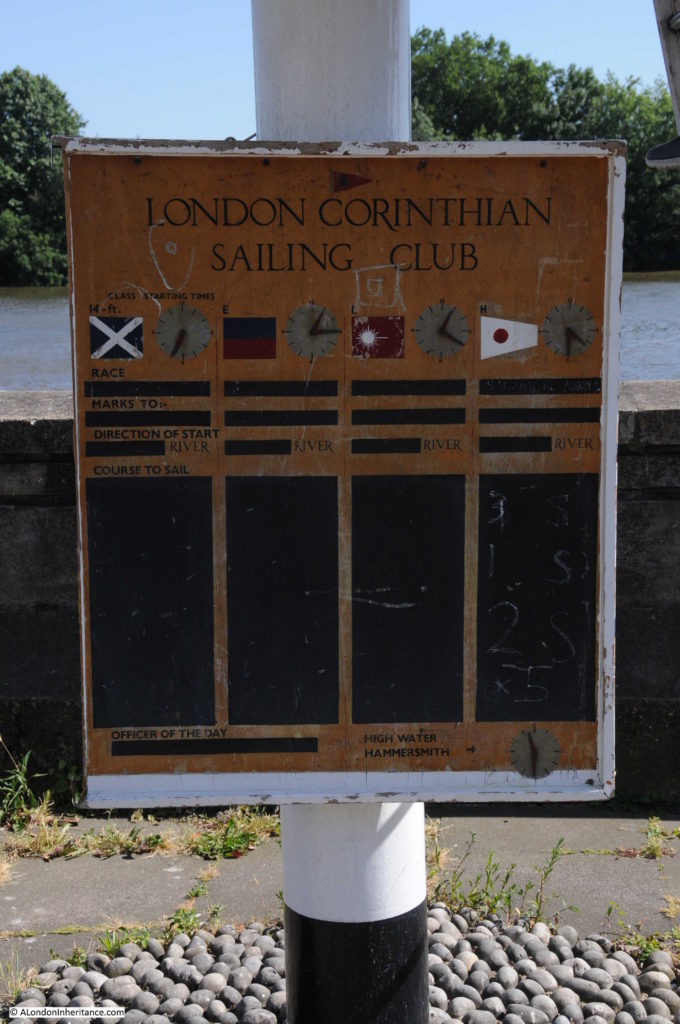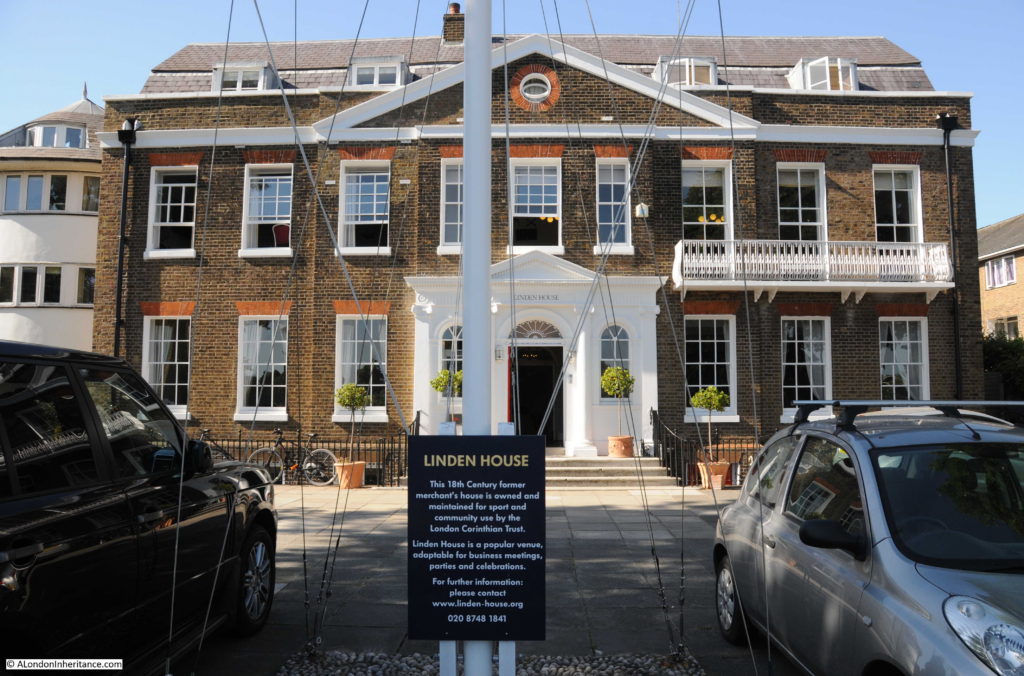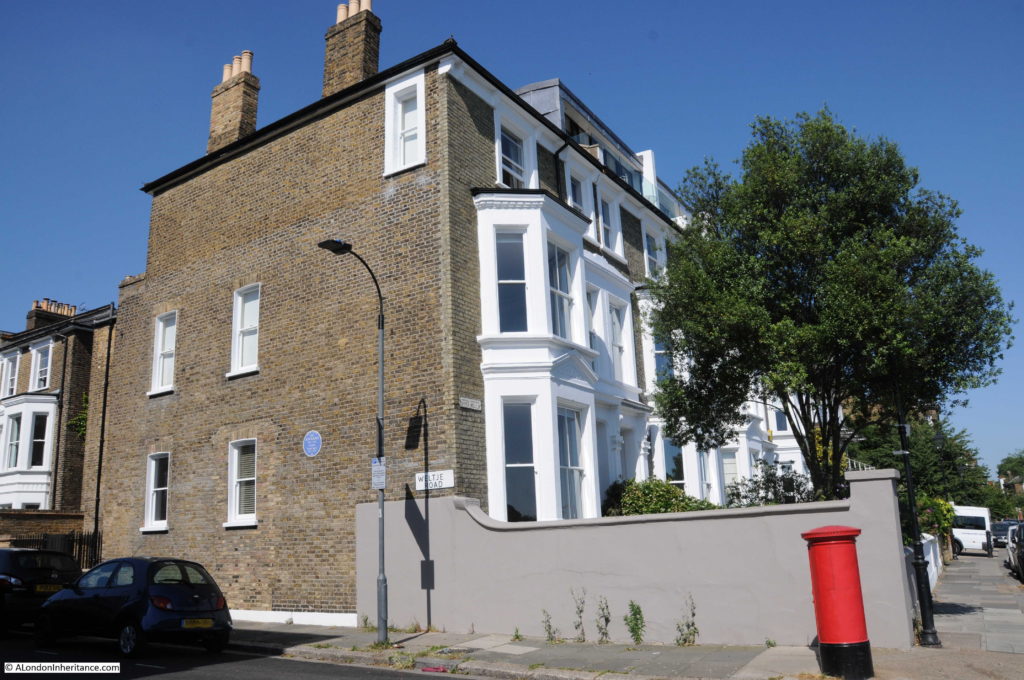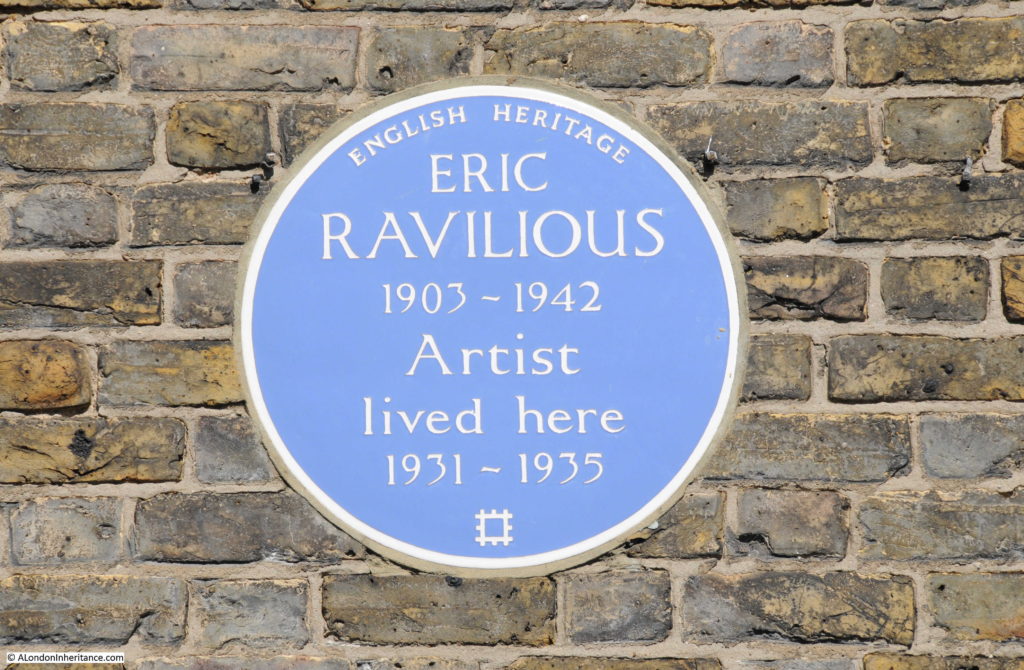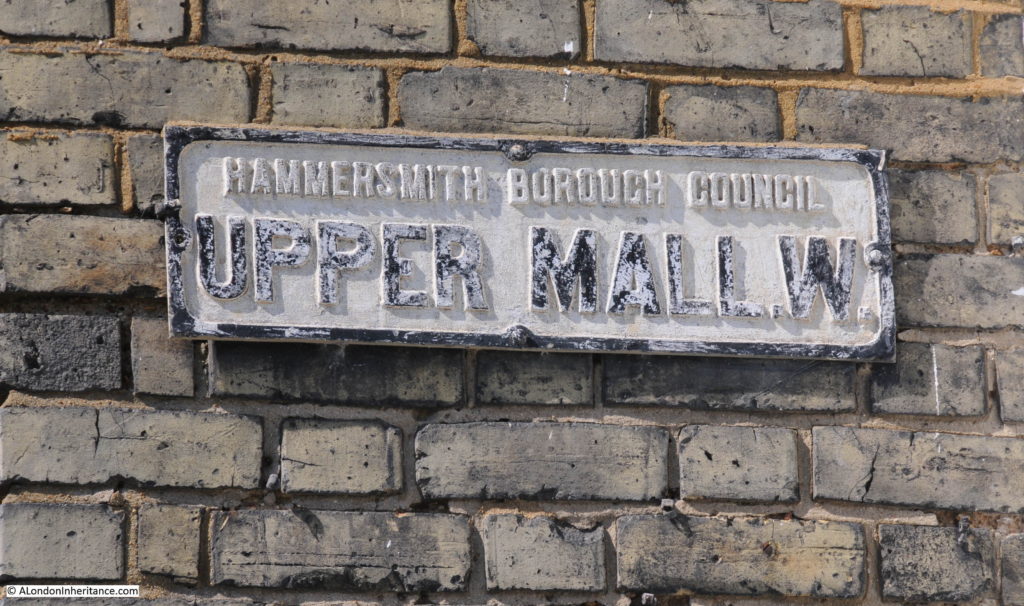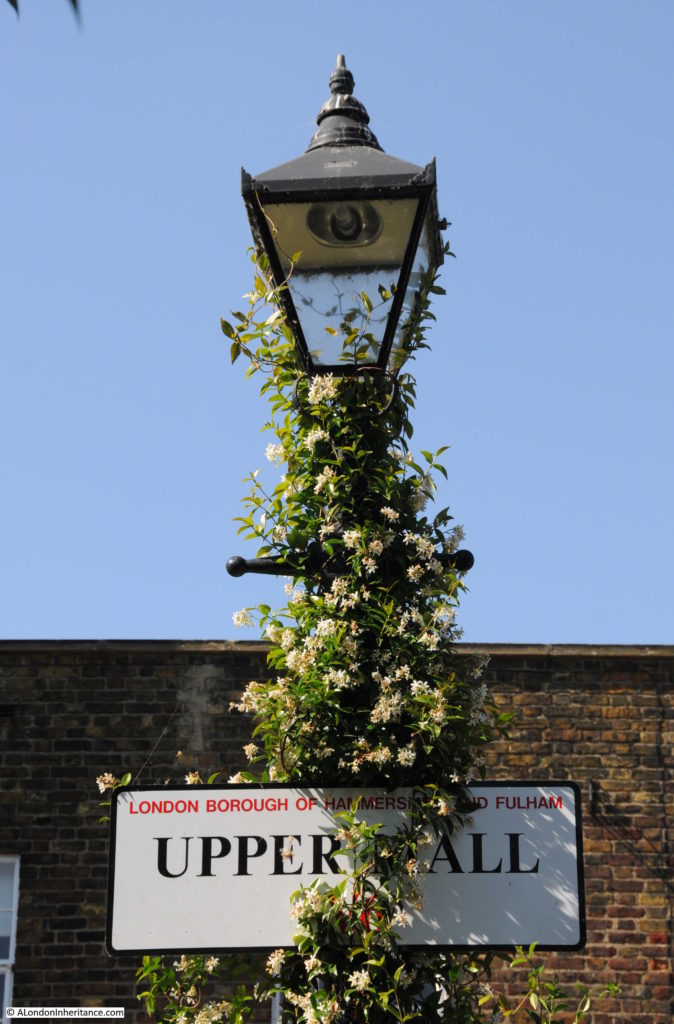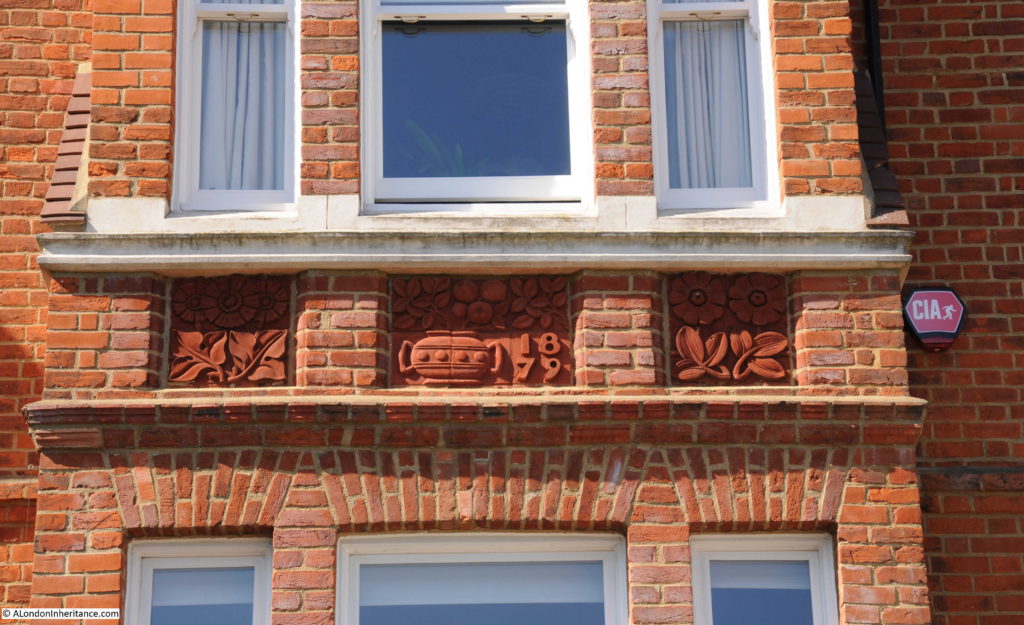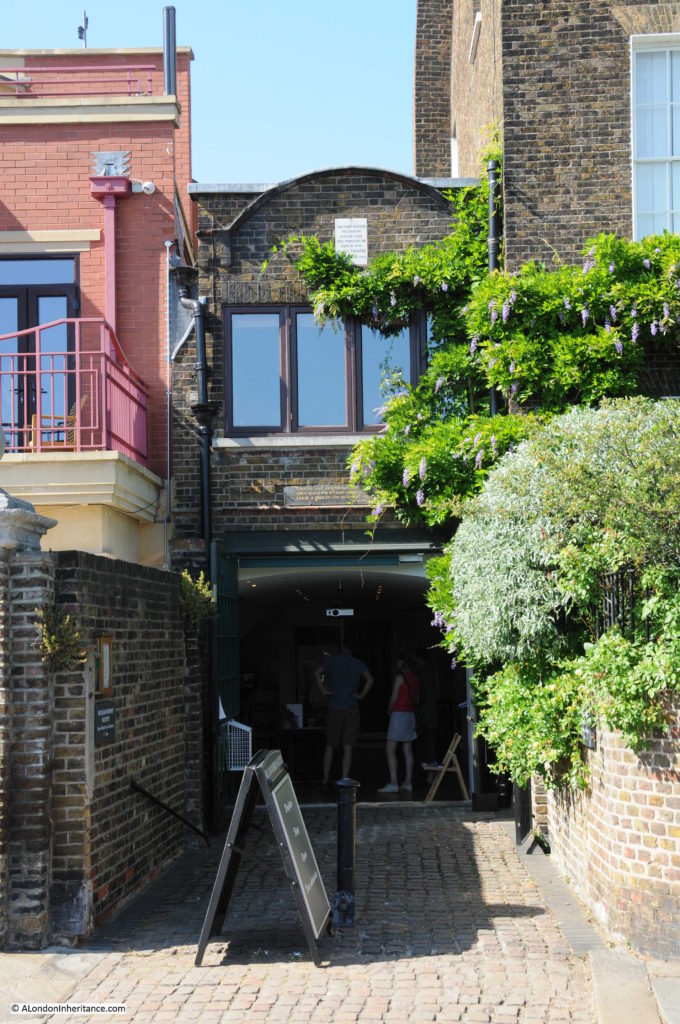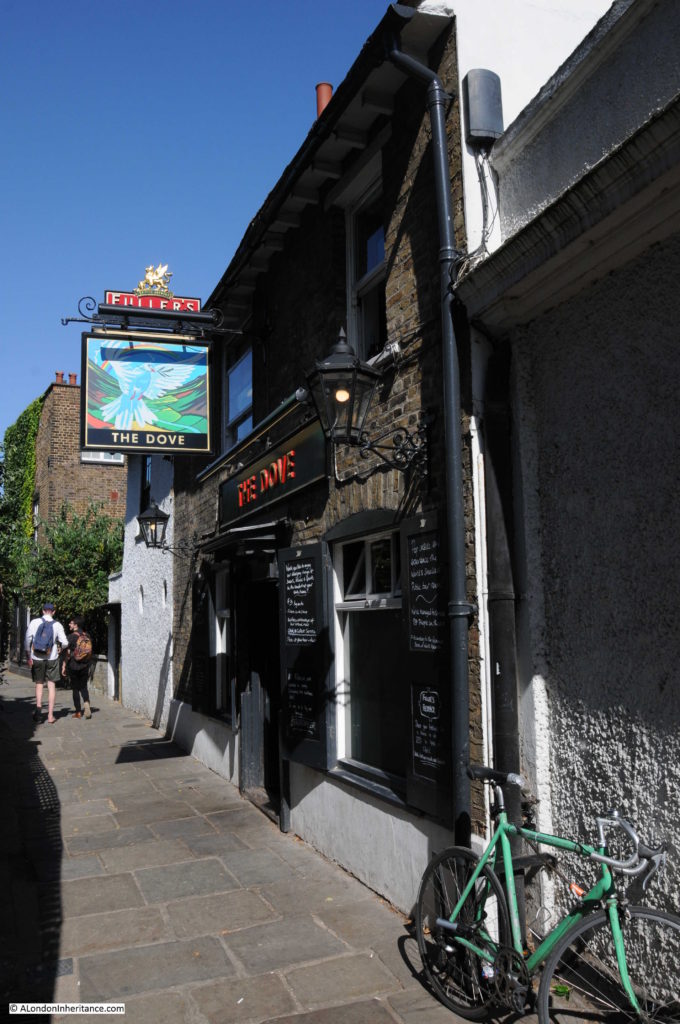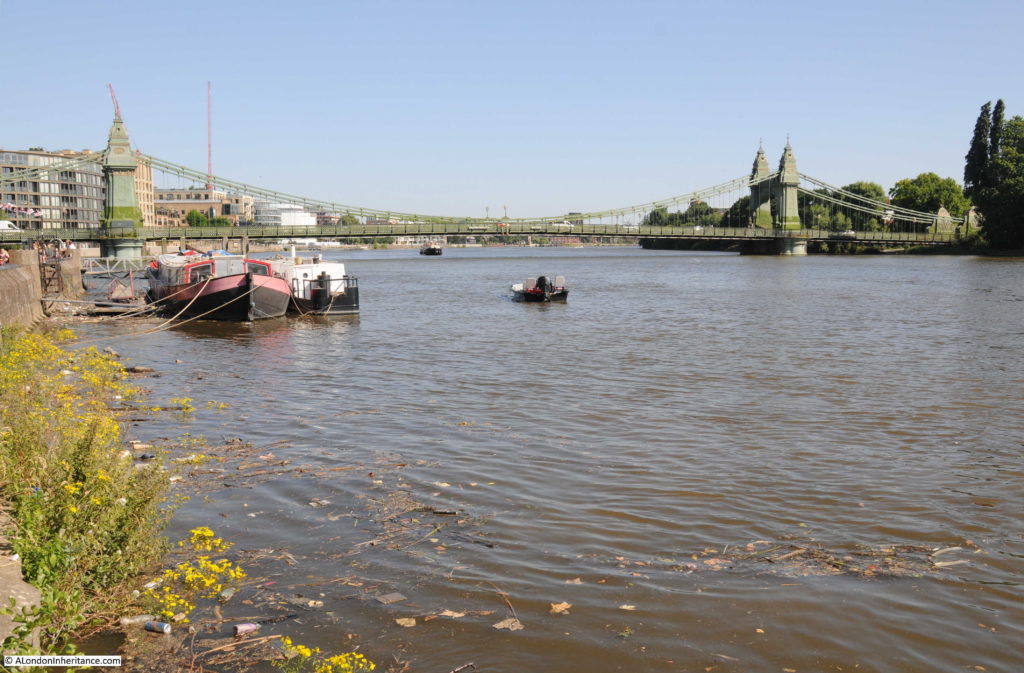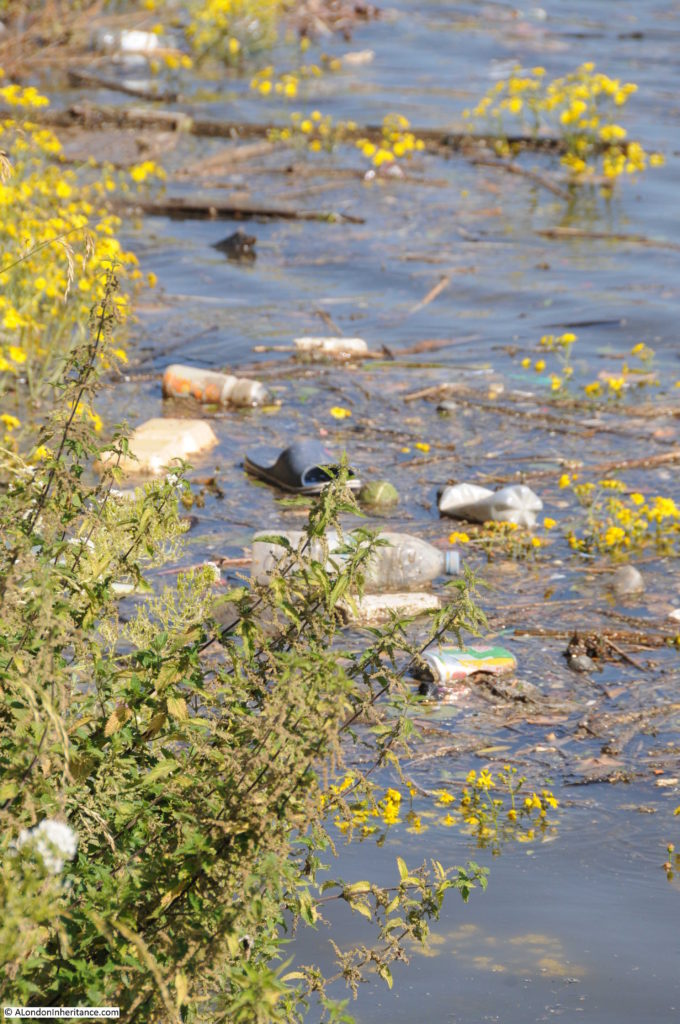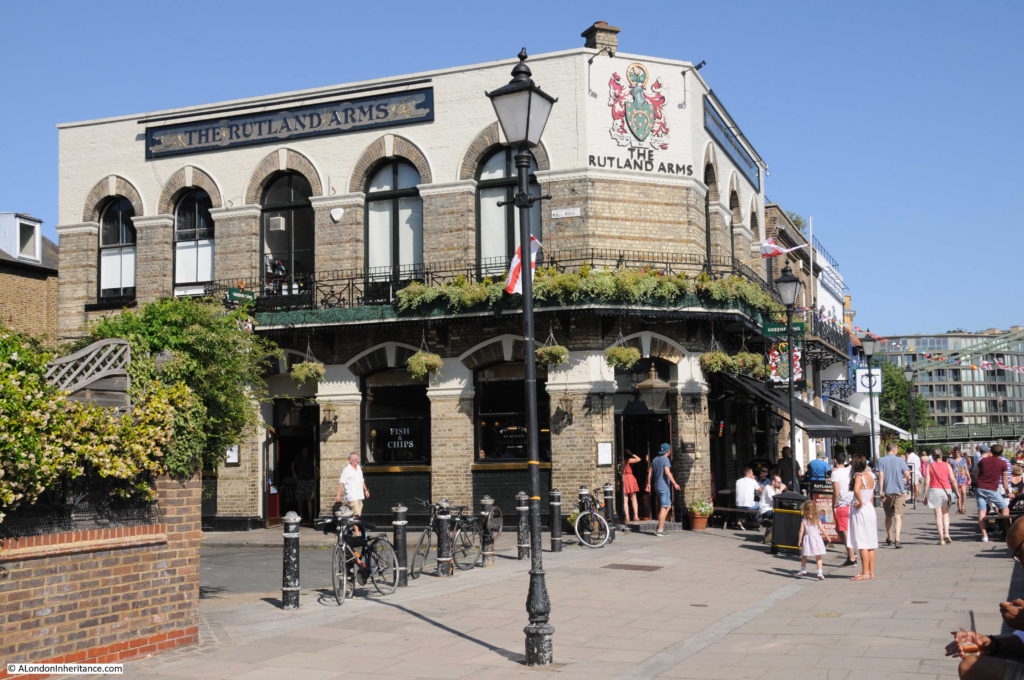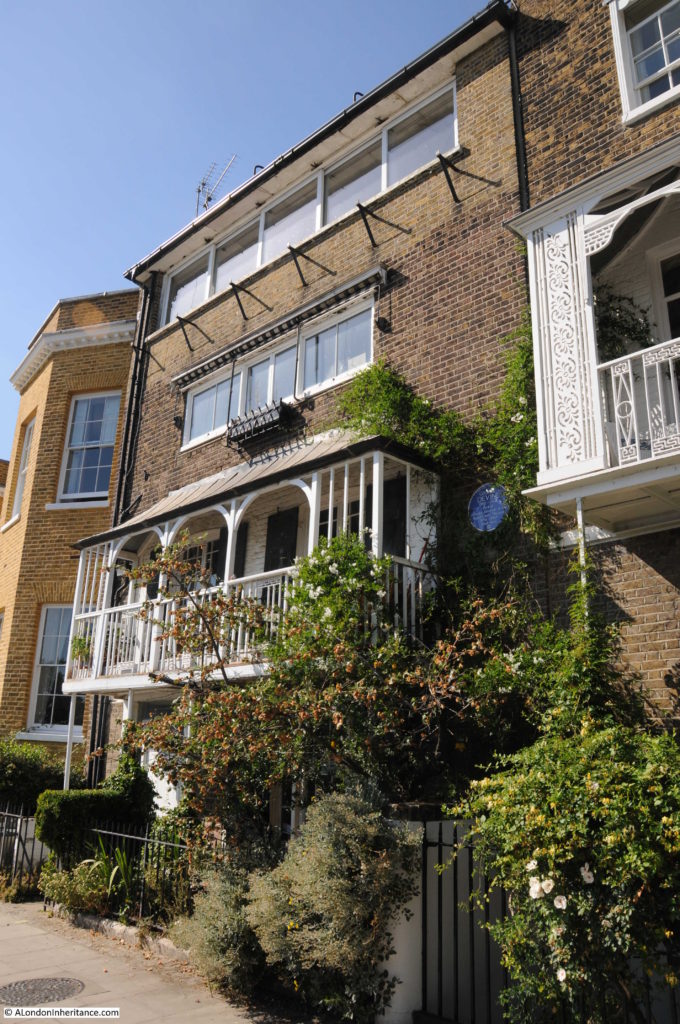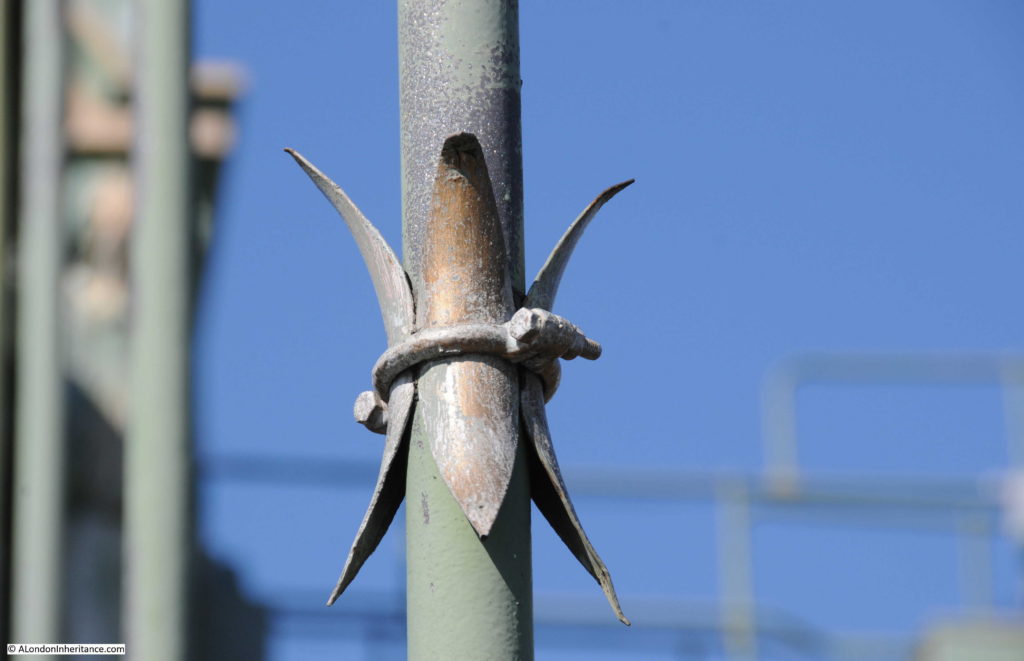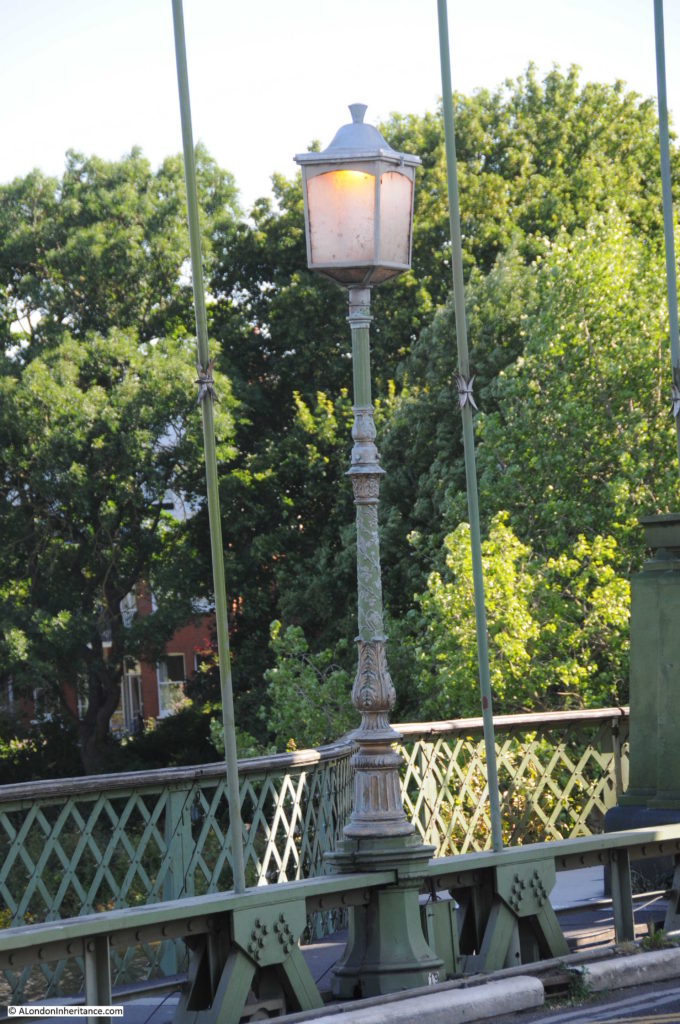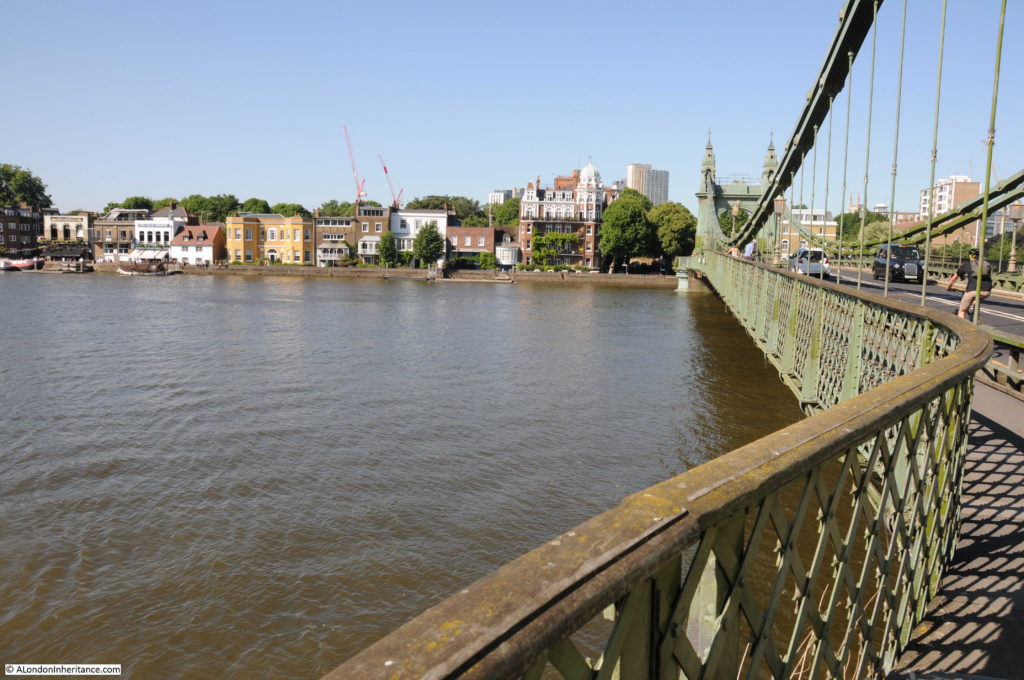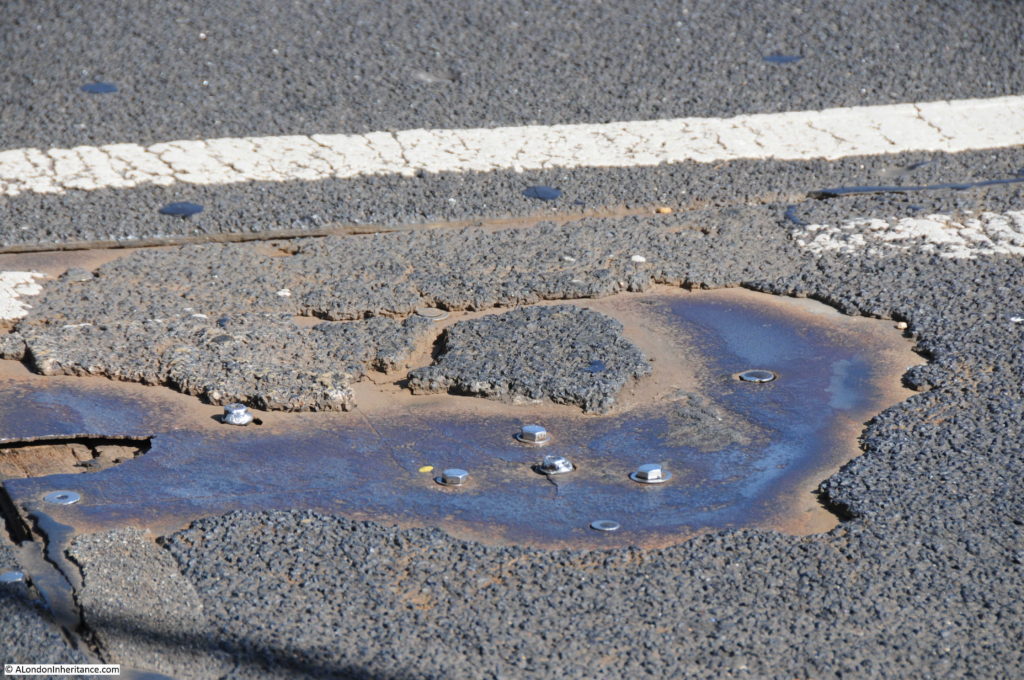If you drive west out of London, along the A4, Great West Road from the Hammersmith Flyover to Chiswick and the Hogarth Roundabout, you pass along a very busy highway with three lanes of traffic either side.
This probably is the last place you would expect to find one of the more historic walks along a very scenic part of the River Thames, with some of the views looking more like the depths of the countryside rather than a built up area of west London.
There are some superb walks along the River Thames, and for today’s post, here is a walk from Chiswick to Hammersmith on a very hot Saturday afternoon in June (it is also a lovely walk on a cold, dark winter’s evening). The walk is perfect for a hot day as there are plenty of suitable stopping places along the route for some quick refreshment.
In the following map extract, the A4 is the large road running from the Hammersmith Flyover at top right, down to the Hogarth Roundabout at bottom left.
(Map “© OpenStreetMap contributors”).
A short distance below the A4 is the river and along the river is a series of streets starting with, on the left, Chiswick Mall.
I started by walking to the river down Church Street, between St. Nicholas’ Church and Fuller’s Griffin Brewery to reach Chiswick Mall.
Chiswick Mall runs along the river, with gardens separating the street from the river, and large houses lining the street opposite the river.
The views here to the river look as if they should be from the upper reaches of the river, rather than a short distance from the six lanes of the A4.
The river here does frequently flood across the road. This was not a particularly high tide, however the damp road shows how far the river had come across the road.
The majority of the houses on the opposite side of the street have flood defences in the form of walls and metal gates that can be closed across the entrances from the street to prevent water from flooding towards the house.
There are also signs warning of the potential impact if you leave your car along the Chiswick Mall.
This is Walpole House, a Grade II listed building dating from the 18th century, possibly with elements from the 17th century.
Barbara Villiers, Duchess of Cleveland, a former mistress of King Charles II was one of the earliest recorded residents, with Thomas Walpole a later owner, who gave his name to the house.
Another view from Chiswick Mall towards the River Thames:
Italy or Chiswick?
At a number of places, the route between Chiswick and Hammersmith turns slightly in land and there are houses between the street and the river. This is where Chiswick Mall ends and becomes Hammersmith Terrace.
There are a number of references to the age of the terrace, dating them from 1755 to 1770. The houses along the terrace are nearly identical, however there are some minor differences, and some which stand out such as very different entrance doorways.
As could be expected there are blue plaques to be found. This one to the typographer and antiquary Emery Walker 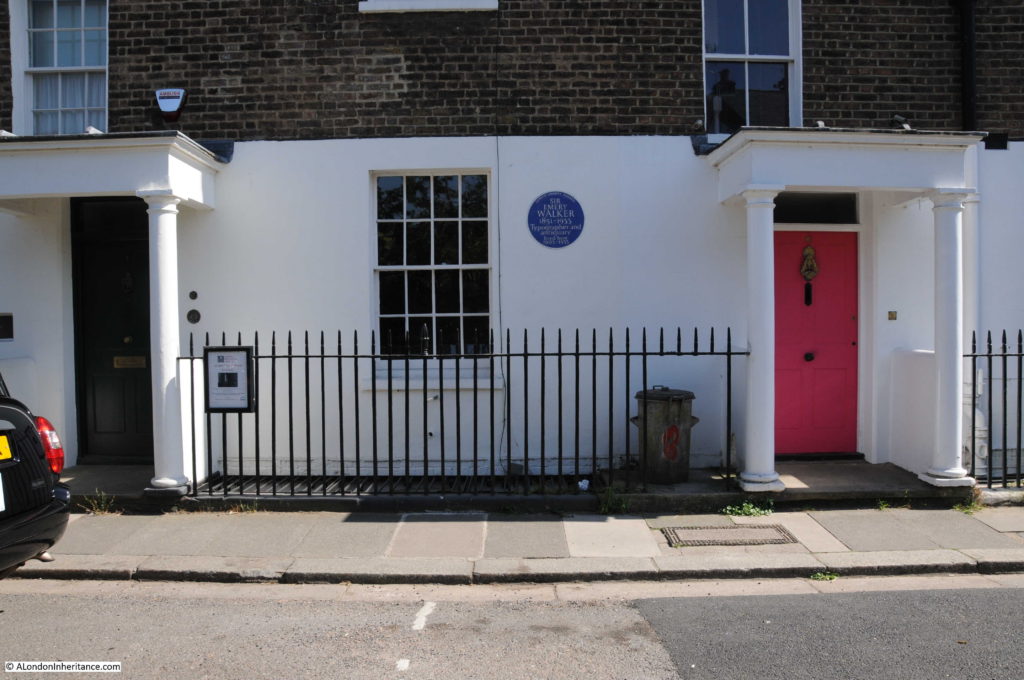
Emery Walker was a friend of William Morris and it was Walker’s interest in early typefaces that inspired Morris to set up the Kelmscott Press.
A short distance along the terrace is another blue plaque, this time for Edward Johnston, a Master Calligrapher.
Edward Johnston has had a significant impact on 20th century London. It was Johnston who created the sans-serif alphabet (now called Johnston) in 1916 for use across London Underground.
At the end of Hammersmith Terrace, the route returns to run alongside the River Thames, and at this turning is a good stopping point – The Black Lion:
The view at the end of Hammersmith Terrace. Hammersmith Bridge is just starting to appear in the distance:
The view looking back upstream towards Chiswick with Chiswick Eyot in the middle of the river:
The River Thames between Hammersmith and Chiswick is a wide river. In many places the river is bounded by large concrete walls that keep the river within the channel, however in some places, such as where the river floods in Chiswick Mall, the river comes up to the road, with a poorly defined boundary between river and land.
This was the state for the river until recent times, and early prints show a wide, meandering river with marshy edges. The following print from 1750 shows the River Thames from Chiswick:
In 1834, the banks of the river are starting to be developed, but the edge of the river is still a natural boundary between buildings and river:
However much of the river now has a very clear boundary, and time for another stop at the Old Ship:
A short distance along from the Old Ship is the London Corinthian Sailing Club, with a lookout and small pier for launching boats onto the Thames:
The forerunner of the club was the London Sailing Club, who later moved further downstream towards Essex, and those who remained in Hammersmith started the Corinthian’s. They were original housed in a building where Furnivall Gardens are now located, however the area suffered badly in the war, and the council cleared the land to create the gardens.
The council provided Linden House for the club where it remains to this day. The building is a magnificent, 18th century, former Merchants house.
On the corner of Upper Mall and Weltje Road is this house with a blue plaque on the side:
The plaque records that the artist Eric Ravilious lived in the house between 1931 and 1935.
He lived in a flat in the house with his wife Tirzah Garwood. His work had a very distinctive style and his later work covered many wartime scenes. He took the opportunity for a posting to Iceland with the RAF in August 1942 to paint both the Icelandic scenery and the work of the RAF.
On the 2nd September 1942 he was on an air-sea rescue mission flying from Iceland, in search of a plane that had been lost the previous day. The plane with Ravilious on board also disappeared, and he was lost at the young age of 39.
The following is an example of his wartime work. Bombing the Channel Ports. with the description from the IWM image: “a deserted coastal road that leads past an ‘acoustic mirror’ early warning device. In the top right of the composition there are searchlights beaming up into the sky, and a large circular glow of light to one side.”
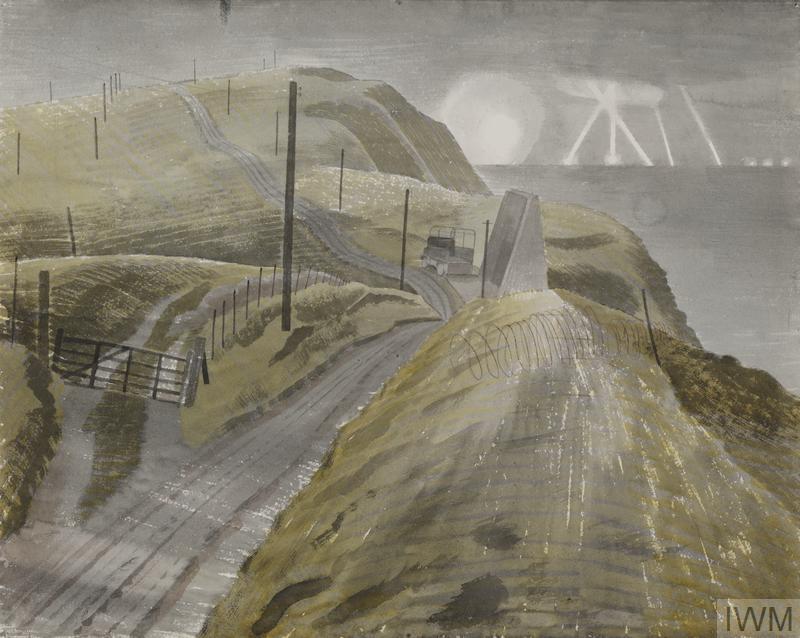
Bombing the Channel Ports (Art.IWM ART LD 1588) Copyright: © IWM. Original Source: http://www.iwm.org.uk/collections/item/object/22468
On the river wall opposite is this survivor from 1960 warning that you could be fined forty shillings for driving or parking along Upper Mall:
On the wall of Eric Ravilious house, there is another survivor from the time when Hammersmith Borough Council was the authority for the area up to 1965.
A Jasmine covered lamp post:
Carved decoration on houses:
On Upper Mall is the small museum of the William Morris Society:
The displays are worth a visit, and above the entrance is an interesting plaque recording a unique event that took place here in Hammersmith.
The plaque is to record the construction and testing of the first electric telegraph here in Hammersmith in 1816.
This was the work of Sir Francis Ronalds who lived here and used his garden for experimentation. He was awarded a knighthood in 1870 and the following Illustrated London News report provides a good insight into an interesting character:
“The Queen has lately conferred the honour of knighthood upon a gentleman in the eighty-second year of his age, who showed the use of the electric telegraph so long ago as 1816. Sir Francis Ronalds, F.R.S. formerly director of the Kew Observatory, has devoted his life to the advancement of electrical science and its practical applications. in 1814, having made the acquaintance of M. de Lue, then engaged in a series of interesting experiments, Mr. Ronalds was induced to turn his attention to this subject.
The researches he then began, with a view to ascertain the degrees of quantity and intensity in the electric pile, and his invention of a clock to be kept in motion by electro-galvanic power, were described in the Philosophical Magazine.
In the summer of 1816 he undertook to prove the practicability of telegraphic communication at great distances, by transmitting a certain number of electric shocks, for an arranged signal, through insulated wires of a considerable length. He laid his wire in glass tubes surrounded by wooden troughs lined with pitch, which were placed in a covered ditch, 525 feet long and 4 feet deep in his garden at Hammersmith. He also suspended eight miles of wire, by silk cords, from two wooden frames erected on the lawn, so that the wire passed to and from many hundred times, well insulated at each point of attachment, and forming one continuous line, kept separate from contact with other parts.
Both these kinds of apparatus served equally to show the instantaneous transmission of the electric shock. in order to provide the means of conveying intelligence along the underground line, he placed at each end of it a clock, with a dial bearing twenty letters inscribed. It is only needful to explain that the two clocks were made to go isochronously, the one always presenting the same letter as the other at any particular second of time; and the moment chosen was indicated at the other end by the sudden collapse of a pair of pith ball electrometers, suspended at each station close to the clock dial and connected with the telegraph wire.”
The following illustration shows the apparatus used by Francis Ronalds in his Hammersmith garden:
I wonder what he would have thought of the people walking by his house using mobile phones with instant communication anywhere in the world?
The route now turns slightly in land as there are a row of houses between the Mall and the river, and here we find the next stop:
The Dove is an old pub, originally an early 18th century coffee house, not that big, but with some brilliant views over the river and the perfect place for a stop on a hot summer’s afternoon.
A short distance further along, the route returns to the river’s edge, alongside Furnivall Gardens, named after Dr. Frederick Furnivall who was one of the original creators of the Oxford English Dictionary. The relevance to the location alongside the river is his enthusiasm for rowing and his own Furnivall Sculling Club.
Alongside Furnivall Gardens we can get a view of the full length of Hammersmith Bridge:
Unfortunately, as the tide comes in, the river washes up the rubbish that has probably been up and down the Thames many times with the tides.
My next stop was at the Rutland Arms, probably the busiest pub along the river between Chiswick and Hammersmith.
Almost next door to the Rutland Arms is an older pub (the white building with the awning projecting from the front), the Blue Anchor which was first licensed in 1722. Another good stop on a hot summer afternoon:
A final blue plaque for George Devine, the Artistic Director of the Royal Court Theatre, who lived in this house overlooking the river and Hammersmith Bridge.
I then reached the end of the walk from Chiswick to Hammersmith, at Hammersmith Bridge, which deserves a dedicated post, however I took a quick walk across as this is always a fascinating bridge to pick out design and construction details.
The year of construction, 1887, replacing a previous bridge across the river:
Detail of the decoration on the rods leading up from the deck of the bridge to the main suspension cable:
Lights, which all appeared to be on during a bright summer afternoon:
The view from the bridge to the north bank at Hammersmith:
Wooden seating between the walkway across the bridge and the road.
As traffic passes over the bridge it makes a very distinctive rumbling noise. The cause of which is easily seen, as it the reason why Hammersmith Bridge is London’s weakest bridge.
The deck of the bridge appears to consist of wooden decking, overlaid with metal plates, then a layer of tarmac, which in many places has disintegrated. The rumbling noise as traffic passes over the bridge is caused by tyres passing over the many exposed bolt heads, which presumably are holding the metal plates and wooden decking together.
Chiswick to Hammersmith along the river is a fascinating walk, not just for the architecture and scenery, but also to discover early experiments with the electric telegraphic and the creator of the typeface that is still used across the London Underground.
There are also plenty of refreshing stops along the way, which on a very hot June day were very welcome.

